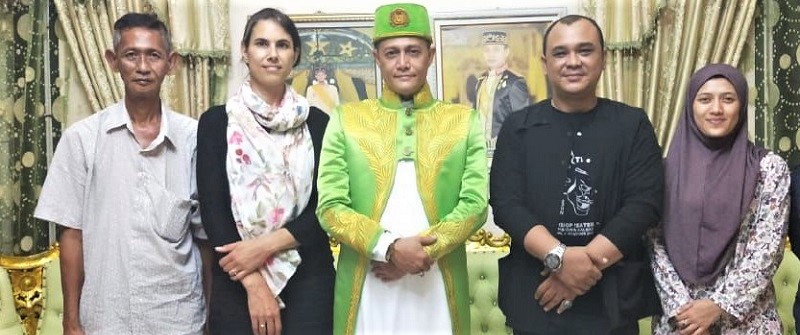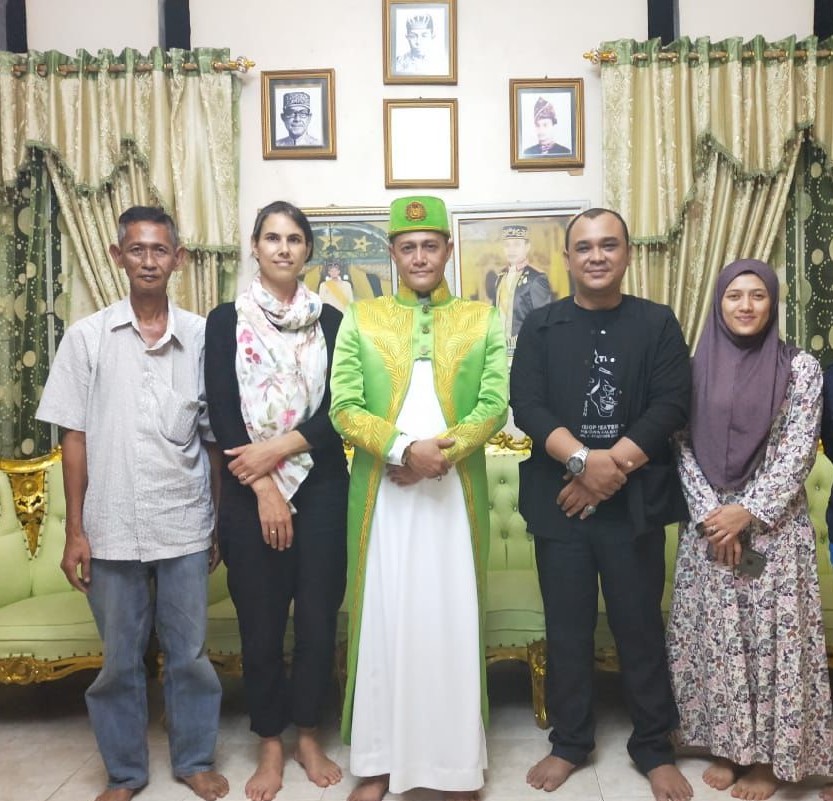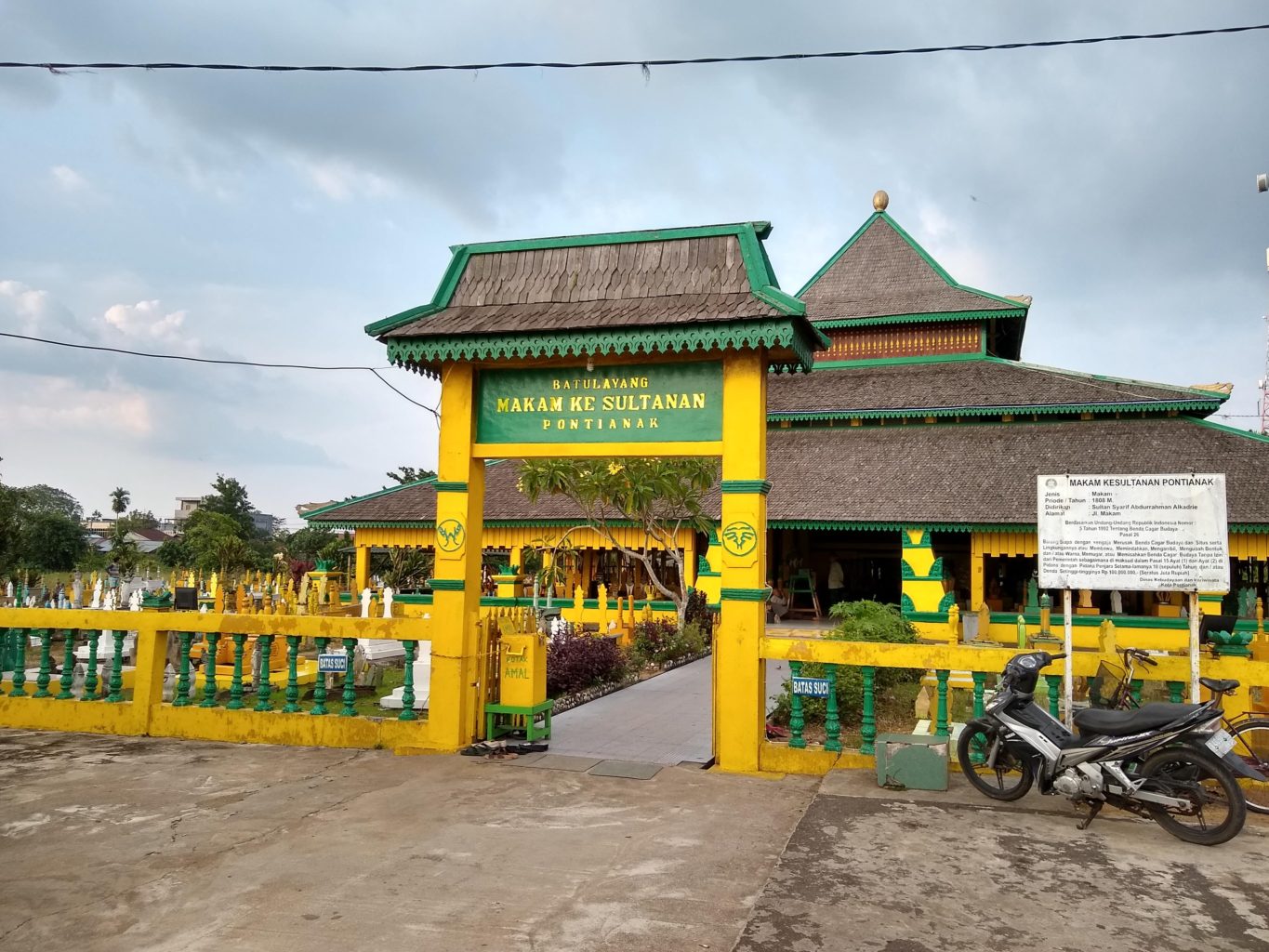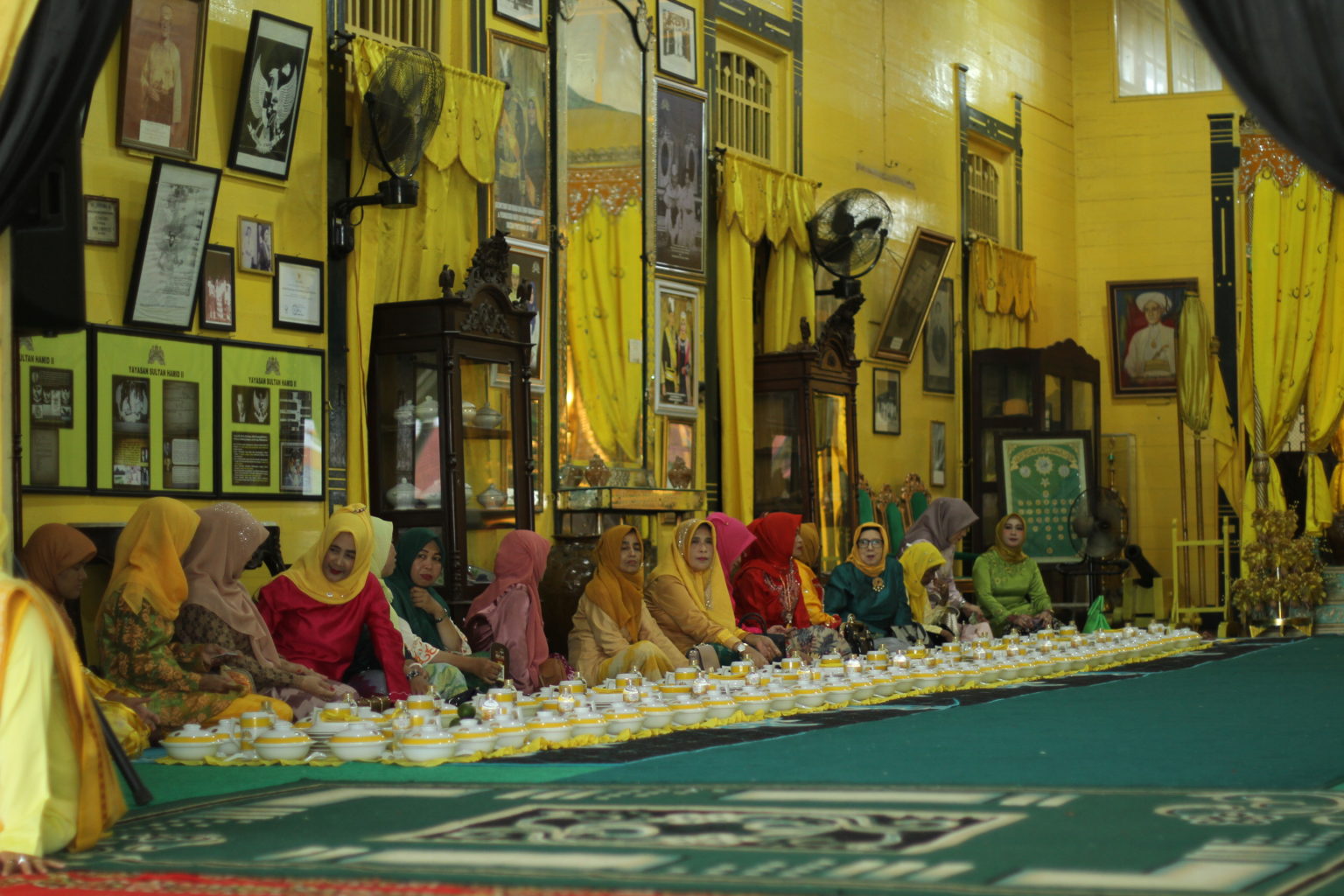
23 Jan Blog: Looking for Hamid: A week in Pontianak (Part 1)
By Katja Paijens
Last November, I visited Pontianak, the capital of the Indonesian province of Kalimantan Barat. This city is inextricably linked with Max Alkadrie (1913-1978), better known as Sultan Hamid II of Pontianak or ‘Beautiful Max’. Not many people seem to have heard of him, despite his historical importance. He played a leading role in the Indonesian National Revolution and designed Indonesia’s national emblem, Garuda Pancasila, symbolizing the unity of the Republic. Interestingly, Sultan Hamid was no proponent of a unitary state, but instead a federalist. In order to write a political biography about this fascinating historical figure, I had to find out more about the type of person Sultan Hamid was. I had to go to Pontianak.
In Pontianak, I was fortunate enough to meet the current sultan, Syarif Melvin Alkadrie, and also his family. Sultan Melvin, who studied law, succeeded his father Syarif Abubakar in 2017. Between the death of Sultan Hamid II in 1978 and Sultan Abubakar assuming the throne in 2004, Pontianak was without a sultan. As the current sultan’s family explained, there was no suitable successor after Hamid II had died. His imprisonment in the wake of Indonesia’s transfer of sovereignty in 1949 and the untimely death of all other male heirs during the Japanese occupation made it difficult for a viable sultanate to be maintained. After a couple of decades had passed, however, the family once again had a suitable candidate. Under new political winds, they were in a position to and ultimately succeeded in restoring the Alkadrie Sultanate in 2004.
Together with the sultan and his family, I walked to the Istana Kadriah, the wooden palace built on stilts. In Sultan Hamid’s days, it was in natural wooden colours. Nowadays, it is painted yellow – the Malay colour denoting royalty – with some green. Most of its furniture was taken or sold during the interregnum. The walls are covered with pictures, mainly of Sultan Hamid and his Garuda Pancasila design. It is clear that the family is proud of Hamid. We also visited the family cemetery, where all the sultans of Pontianak, their wives and children are buried. It was here that Sultan Hamid II was also laid to rest, but not his Dutch wife Didi or their children, who had moved to the Netherlands following the Revolution.
My visit coincided with a royal wedding involving the sultan’s cousin, which took place in the Istana Kadriah and lasted almost three days. The bride and groom wore the traditional wedding attire of yellow, black and gold. While the bridal couple waited for the next ritual, the guests enjoyed a meal from the palace kitchen.
I had looked forward to visiting Pontianak, but nothing could have prepared me for such a warm welcome. The sultan and his relatives invited me to see many places and to talk to a great number of people relevant to my research. One cousin fluent in English helped me out when my Indonesian proved inadequate and enjoyed all the family stories as much as I did. While we talked about Sultan Hamid and enjoyed all kinds of local snacks and dishes, made to royal recipes, family, friends, business people and clerics came and went. They shared a treasure of memories about the sultan. Hamid didn’t like rice and preferred mashed potatoes or bread, even with Indonesian food, which he did like. One aunt remembered Hamid’s favourite potato dish and prepared it, along with all kinds of delicious food from Pontianak.



(Katja Paijens is a PhD candidate based at KITLV and the Leiden University Institute for History. She is writing a political biography of Sultan Hamid II of Pontianak (1913-1978). Her thesis focuses on Hamid’s role in and significance to Indonesia’s decolonization and state formation, 1945-1950).




No Comments